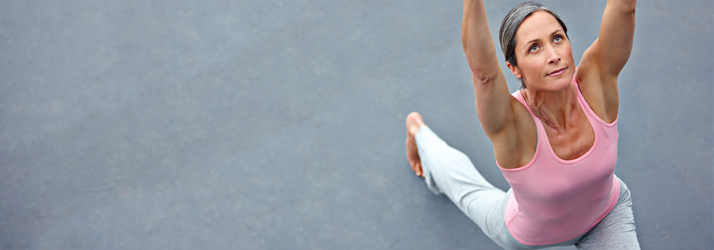The 9 Best Yoga Poses for Lower Back Pain In South Orlando FL
The 9 Best Yoga Poses for Lower Back Pain
in South Orlando FL

Yoga is the Sanskrit word for yoke, which means to “bring together.” The goal of yoga is to bring the body and mind together through breathing, meditation, and a series of poses called asanas with the intention of making you more self-aware as to what is going on both physically and mentally.
Yoga in South Orlando FL can also help reduce stress, relieve anxiety, improve sleep and flexibility, and help reduce the symptoms lower back pain. Chief among those areas of the body is the low back.
Tips Before Beginning Yoga Exercises in South Orlando FL
Before beginning any sort of exercise regimen, it’s a good idea to speak to a healthcare provider about your back pain first.
Be aware, however, that you should never feel pain in yoga. Instead, you should feel what’s called the “good hurt” or “going to your edge,” meaning you want to stretch yourself both physically and mentally to a place that might be outside your comfort zone but not so far outside that you ignore the warning bells going off in your head and your body screaming for you to stop.
Yoga is an exploration, meant to make you feel more relaxed and at ease within your own body, and that includes finding ease from your lower back pain.
Best Yoga Poses for Lower Back Pain
The following 9 poses are listed so they can be done in a sequence, with one pose flowing easily into the next:
Reclined Supine Twist
A reclined supine twist provides a great stretch if your lower back is tight. If you find the action of twisting places more strain on your back, stop doing the pose. Instead, you can lie comfortably on your back and draw both knees in toward the chest, giving yourself a stretch that way.
To perform the Reclined Supine Twist:
- Begin by laying on your back. Extend your arms either straight off the shoulders or bend at the elbows in a cactus or goal-post pose.
- Draw the knees in toward the chest and drop them to the right. If the knees have trouble touching down, place a pillow or a yoga block under the bottom knee, bringing the floor up to meet you. You want to be able to relax into this pose.
- Try and release the left shoulder closer to the floor (it’s okay if it doesn’t touch down all the way).
- Notice if the head wants to crank way back in this position. If it does, place a rolled towel or blanket under the head to create more of a straight line with the spine.
- Remain here for about a minute before drawing the knees up through the center and over to the other side, holding for one minute there.
Cat/Cow Pose
Cat and Cow poses go hand-in-hand in almost any yoga class. Usually performed early on in a sequence, they are often done to loosen and warm up the body before moving through more rigorous postures. Both poses are wonderful in providing lower back pain relief, but the cat pose feels especially great if you’re experiencing pain or feeling tight.
To perform this exercise:
- Come onto all fours in a tabletop position with your knees directly under the hips and your wrists directly under the shoulders.
- As you exhale, round your spine, tucking the tailbone and tucking the chin, dropping the crown of the head toward the floor. This is the Cat pose.
- Next, on an inhale, reverse the move, dropping your belly toward the floor, and lifting your tailbone, chest, and face toward the sky. This is the Cow pose.
- Moving with your breath, perform both poses about five to seven times each.
Child's Pose
In yoga, a Child’s pose is considered a resting posture. If ever you’re feeling tired or need a break during a yoga class, you’re urged to drop into this pose, and the same can be said in your everyday life, especially if you need to give your lower back a break. It not only gives the low back a lovely stretch, but it also lengthens and decompresses the spine.
To perform this exercise:
- From that tabletop position (above) you established during Cat/Cow pose, bring your feet together and press back to sit on your heels, laying your torso on your legs.
- Bring your forehead to rest on the floor and extend your arms long overhead, making sure to plug the arms into their sockets – don’t let your shoulders hike up toward your ears. You don’t want to add shoulder or upper back pain to the mix!
- For some, keeping the legs closer together can be uncomfortable. If you feel like that’s the case, keep your feet together but take your knees out wide so you can fit your torso into that space you created.
- To deepen the stretch, tuck your tailbone and lengthen the crown of the head, maybe walking the hands a little farther out in front of you.
- Remain in this pose for up to three minutes.
Downward Dog
Downward-facing Dog is another yoga pose that’s considered a resting posture, but ask any beginner yogi, and they’ll beg to differ. This can be tiresome on your arms. Regardless, Downward-facing Dog, or Down-dog, for short, is a wonderful posture that stretches the hamstrings, which can relieve pressure on the lower back, as well as elongates and decompresses the whole spine.
To perform this exercise:
- Again, from a tabletop position, tuck your toes under and lift your hips toward the sky. You should look like an upside-down “V.”
- Your hands should be shoulder-width apart and you want to press into the floor equally with each finger, especially with the middle knuckle of each finger.
- Shoulders should be down away from the ears and you want to lift your tailbone toward the sky.
- Feel free to “walk your dog” by peddling the feet, pressing one heel toward the floor and then the other.
- Another option is to remain still in Down-dog and breathe for five breaths.
Plank Pose
The plank pose is an excellent yoga pose for reducing lower back pain because it helps strengthen the core. This is another pose, however, to come out of immediately if you feel more back pain than when you started.
To perform this exercise:
- From Downward-facing Dog (above), ripple forward so the body is in one, straight line with the legs extended long and the wrists directly under the shoulders. Fingers should be spread nice and wide, again, bringing equal weight into each finger.
- Tuck the tailbone slightly and engage the core by drawing the navel toward the spine.
- The neck should be nice and long – you don’t want to tuck the chin or crank the head back. Take your gaze a few inches out in front of you.
- Hold for 30 seconds, eventually working up to a minute hold. Don’t forget to breathe!
Sphinx Pose
This is another pose that strengthens the core while bringing relief to the lower back.
To perform this exercise:
- Lower down onto your stomach and take your feet about hip-width apart to start.
- Bring the forearms onto the floor with your elbows directly underneath the shoulders, chest, and crown of the head lifting toward the ceiling.
- If you feel any strain on the low back, take your legs out a little wider. If you still experience pain, come out of the pose entirely.
OFFICE HOURS
Monday
8:00am - 5:30pm
Tuesday
8:00am - 2:00pm
Wednesday
8:00am - 5:30pm
Thursday
12:00pm - 5:30pm
Friday
8:00am - 2:00pm
Saturday & Sunday
Closed
Health First Chiropractic and Nutrition
400 Gatlin Ave Suite A
Orlando, FL 32806



